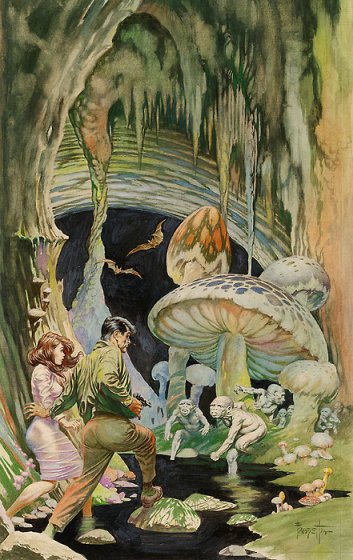Cyclops:
Dragon, Four-eyed:
The rulers of the cat people:
A wizard and his pets:
A wizard with a nose piercing and fairy lackeys:
 |
| Frank Frazetta |
PENNSYLVANIA, DIXONVILLE - Mine inspector Glenn E. Berger reported in 1944 to his superiors that the Dixonville mine disaster which "killed" 15 men was not the result of a cave-in, but rather an attack by underground creatures capable of manipulating the earth [partial cave-ins], whose domain the miners had apparently penetrated. Most of the dead miners were not injured by falling rocks but showed signs of large claw marks, others were missing, and one survivor spoke of seeing a vicious humanoid creature that was 'not of this world' within an ancient passage that the miners had broke into. The creature somehow created a "cave-in", blocking himself and another inspector [who closed his eyes when he felt the creatures 'hot breath' on his neck] from the main passage until another rescue party began to dig through the collapse, scaring the "creature" away.Shaverian Mysteries
"Prophecies and charms marked his face, talismans against attacks from animals, demons, and men."Some editions of D&D have felt suggested magic items were required equipment at certain levels. Even before that, the fact that you could sell magic items suggested the existence of places they might be bought: Ye Olde Magic Shoppe. Neither of these facts have ever sat well with some people, who view these as part of a mundanifying, possibly even industrializing of magic. In general, I would count myself among them, though it depends on the setting, really.
- Brian Catling, The Vorrh
"...a megadungeon should have a certain amount of verisimilitude and internal consistency, but it is an underworld: a place where the normal laws of reality may not apply, and may be bent, warped, or broken. Not merely an underground site or a lair, not sane, the underworld gnaws on the physical world like some chaotic cancer.
It is inimical to men; the dungeon, itself, opposes and obstructs the adventurers brave enough to explore it."